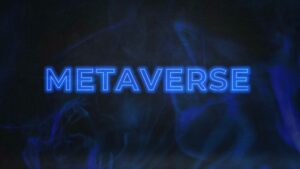Software development
Bachar ABOU SALEH on LinkedIn: MongoDB Day Amsterdam
Lots of data management and BI tools rely on SQL and programatically generate complex SQL statements to get just the right collection of data from the database. PostgreSQL does very well in such contexts because it is a robust, enterprise-grade implementation that is understood by many developers. PostgreSQL can be run as an installed, self-managed version, or as a database-as-a-service on all of the leading cloud providers. Each of those implementations work the way the cloud provider that created them wants them to work. To get support for PostgreSQL, you have to use a cloud version or go to third parties offering specialized services.
Its indexing strategies include multicolumn, B-tree, parial, and expressions. But advanced techniques are available too, such as SP-Gist, GiST, GIN, KNN Gist, and BRIN, spanning indexes and bloom filters. They have also highlighted that, at present, there are no relational databases that fully conform to that standard. Data can be represented by documents easily if it aligns with objects in application code. MongoDB is a fantastic fit throughout development and production — particularly if you need to scale. Today, MongoDB provides the industry’s leading resiliency, security, performance, and scalability.
PostgreSQL: The SQL Database Of Today
MongoDB has only recently (with version 4) started to support ACID transactions similar to SQL databases. Assessing the performance of two different database systems is challenging since both MongoDB and PostgreSQL have different ways of storing and retrieving the data. Indexes are objects or structures that allow us to retrieve specific rows or data faster.
Replication is a database feature that ensures failure tolerance and high availability. Extensibility means the database is designed to be able to add new capabilities or functionalities. In contrast to PostgreSQL, not every NoSQL database is ACID compliant but MongoDB is. Furthermore, PostgreSQL is considered to be mongodb vs postgresql highly secure as the community took extra steps to focus on security by actively releasing updates. This decision is not just a checkbox but a strategic alignment with your application’s long-term vision. Make it analytically and sleep well, knowing you’ve laid a solid foundation for your software architecture.
Language & Syntax
They are loved by many and the team at HarperDB is thankful that they have paved the way for technologies like ours to exist. PostgreSQL scales vertically (as it gets bigger, more space or more memory is needed), therefore it requires downtime to upgrade. With both MongoDB and HarperDB, using JSON allows you to change your schema flexibly without consequence.

It is worth mentioning, that the selection of different vessels (ship_id) and time intervals follows a normal distribution, which was applied in the dataset at an early stage before the execution of queries. The results show that PostgreSQL outperforms MongoDB in almost all queries. Notwithstanding, this reduction is significantly lower in PostgreSQL. The connections between elements in the database are called links or relationships.
MongoDB’s fit to purpose
Katz explained that PostgreSQL 16 enables users to set up logical replication from a standby node. He noted that this capability is helpful for users who already have significant workloads on their primary instance and want to offload logical replication to a less-busy standby. It includes its file system called GridFS, similar to the Hadoop Distributed File System (HDFS), which stores file more significantly than the BSON limit of 16MB per document.

As with MySQL and alternative open-source relational databases, PostgreSQL’s efficiency has been proven in the mix of demanding use cases spanning multiple areas of industry. As you may know, PostgreSQL refers to itself as an open-source object-relational database system. This SQL database https://www.globalcloudteam.com/ has approaches for boosting concurrency, handling indexing, introducing optimizations, and enhancing performance — such as table partitioning, advanced indexing, among additional functions. As with Linux, PostgreSQL is a great example of an open-source project that has been managed well.
PostgreSQL: A Modern SQL Database
Because PostgreSQL relies on a scale-up strategy to scale writes or data volumes, it must make the most of the computing resources available. PostgreSQL does this through a variety of strategies for indexing and concurrency. PostgreSQL’s design principles emphasize SQL and relational tables and allow extensibility. Both PostgreSQL and MongoDB have strong communities of developers and consultants who are ready to help. The important thing to remember is that transactions allow many changes to a database to be made in a group or rolled back in a group.
- MongoDB is scalable because of partitioning data across instances within the cluster.
- However, if you are already familiar with SQL, PostgreSQL’s query language should be easy to learn and use.
- It enables database administrators to provide high data redundancy and high availability of data.
- MongoDB Atlas performs the same way across the three biggest cloud providers, making migration between multiple clouds easier.
- Much of the discussion in the computer science realm is about isolation levels in database transactions.
MongoDB does not support Foreign Keys whereas PostgreSQL does support them. By enabling foreign key constraints, PostgreSQL can avoid the insertion of invalid data into foreign key columns. ACID compliance is most important in situations where transactions must be guaranteed to be executed in a consistent, isolated, and durable manner, such as in financial transactions. However, in MongoDB’s data model, transactions are typically less complex, and the need for strong ACID compliance may be less important.
How to Choose Between PostgreSQL, MongoDB, and Amazon DocumentDB
In this binary representation, fields may differ from one document to the next — structures don’t need to be declared to the system, as documents are self describing. This means it’s easy for developers to pick up, learn, and put to good use. Documents empower you with the flexibility to represent hierarchy-based relationships to store arrays and others (even those that are significantly more complex) in a simple way.

By storing data in fields such as nested subdocuments and arrays, related information in JSON documents can be stored together for quick query access through the MongoDB query language. MongoDB’s document model allows a user to naturally map to objects within application code, making it easier for full-stack developers to learn and use. Documents provide you with the ability to depict hierarchical relationships to store arrays and other more sophisticated structures easily. PostgreSQL is a highly stable database management system, backed by over 20 years of community development that has led to its high levels of integrity, resilience, and correctness. You can use PostgreSQL as the primary data warehouse or data source for various mobile, geospatial, analytics, and web applications.
MongoDB vs PostgreSQL
Hadoop fits well in that case as it can handle large scale data and support big data computations and analytics through MapReduce and some declarative query interfaces such as Hive [17], Pig [18] and Scope [19]. The main challenges in spatial partitioning are the spatial data skew problem which can result in bad response time through load imbalance and boundary objects problem which can lead to incorrect query results. A type of database system that does not necessarily use traditional structured query language (SQL) to query database systems. NoSQL databases are non-tabular, and they vary based on their different data models, such are document, wide-column, key-value, or graph. Their structure provides flexible schemas, and they can be scaled easily.

